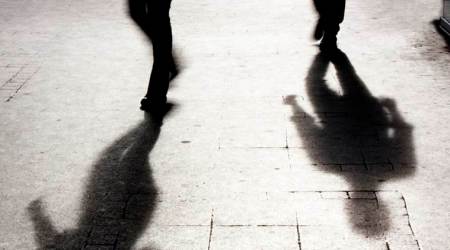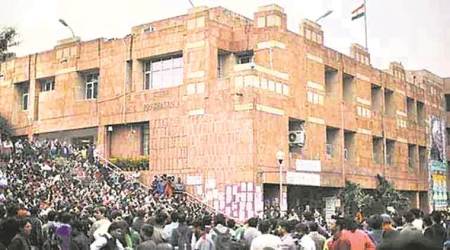 The presidential candidates for JNUSU.
The presidential candidates for JNUSU.
On Wednesday, as soon as the Election Committee of the Jawaharlal Nehru University Students’ Union announced the final candidates, preparation for campaigning had begun. Candidates, with small slips in their hands, had starting moving around, meeting students. Unlike Delhi University, where pamphlets are strewn on the road, placards are put up, and cavalcades with banners move across the city, JNU does not look very different from any other day.
Parties, irrespective of where they fall on the political spectrum, follow more or less the same campaigning mode — at classes in the morning, dhabas in the evening, and the mess at night. Excess expenditure, defacement of property, and physical squabbles are largely alien to the campus.
It is this “culture” that the Left organisations hope to “protect and continue”. Outgoing general secretary Satarupa Chakraborty said, “The JNUSU election happens without any violence, money or muscle power. The election is conducted by the elected Students’ EC. This culture has been developed through years of struggle; it is ensured that the battle happens on the basis of political ideology, not by engaging in any physical fight.”
Also Read: Hardlook: DUSU polls, Writing on the wall (Read Here)
Even organisations like the Akhil Bharatiya Vidyarthi Parishad (ABVP) and the National Students’ Union of India (NSUI) — known to use “money and muscle” in Delhi University — refrain from these tactics in JNU, limiting themselves to organising public meetings and seminars. The most ABVP did this year was to take freshers to the Parliament for an interaction with Speaker Sumitra Mahajan.
“The culture of JNU is very different from DU. JNU is more of an ideological challenge. Students here ask questions, so we have to engage with them at an ideological level. Unlike DU, one-on-one interactions are very important here,” said former JNUSU joint secretary Saurabh Sharma from ABVP.
The differences are also evident in the issues JNUSU polls are fought over. This time, it’s the disappearance of JNU student Najeeb Ahmad, seat cuts in MPhil and PhD seats, and doing away of gender deprivation points. Also on the agenda of Left-leaning student bodies is what they call “a spate of right-wing attacks” in the country.
Barring the All India Students’ Federation (AISF), to which former JNUSU president Kanhaiya Kumar belongs, the Left outfits are fighting as one this time. CPI leader D Raja’s daughter, Aparajitha Raja, has decided to stand for president from AISF, amid rumours that the alliance with other Left parties — AISA, SFI and DSF — didn’t work out as she insisted on contesting for the post. The reason, she maintains, is because of the AISA’s and the SFI’s “lack of performance” in the previous term.
While the ‘Left Unity’ panel and the ABVP are set to go head to head, players such as the Ambedkarite Birsa Ambedkar Phule Students’ Association and the AISF cannot be ignored. “AISA-SFI did not respect the seat of JNUSU. They did not lead the struggle for Najeeb, or the struggle against the UGC gazette notification which led to seat cuts. This Left unity is only to suppress the voice of the oppressed,” said BAPSA presidential candidate Shabana Ali.
However, in a pamphlet, the Left panel said it is “committed to intensifying the struggle on all fronts” — deprivation points, research seats, justice for Najeeb — and that it represents the “only force that has consistently waged an ideological-political struggle on all these fronts last year…”
The ABVP, which has grown in force over the last year, seems more confident now that the AISF is contesting separately. “She (Raja) will dent the Left votes, which will create space for us. If all four Left parties had come together, it would have become very difficult for us, but this has given us a real chance. Whoever wins, it’ll be by a narrow margin,” said a prominent ABVP activist.

